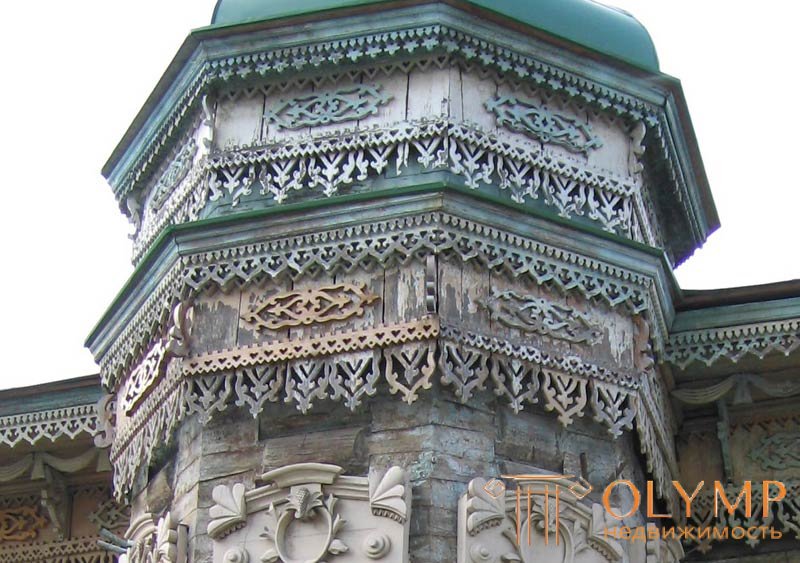

The through (openwork) thread is subdivided into the actual through and invoice, it has two subspecies: the slotted thread (the through sections are cut by chisels and cutters) and the cutting thread (actually the same, but such areas are sawed with a saw or jig saw). The most productive tool, of course, is jigsaw.
With the cutting thread method, the background is removed. In combination with a relief or geometric thread creates the impression of airiness products. The techniques for cutting the carving are very simple, so it has been widely distributed since ancient times, especially in the decoration of wooden houses. The cutting thread in combination with geometric grooves and embossed forms is considered more laborious. Such a thread is called a through openwork. The widespread use of slotted threads is also due to the fact that, compared with other types of plane-relief threads, it is less labor-intensive. The simplest and most convenient is the method of carving using stencils. Due to the large number of options, it is indispensable in the manufacture of carved home decor.
The slotted carving can be geometrical, contoured, beaten, with good and clean design gives the product openwork and lightness, especially the frames, eaves and fences. It is easier to cut out a cut-through or false-thread ornament than to choose a background with a notch contour in a deaf thread.
The edges of the ornament are not always smooth and clean; therefore, they are rounded off, cutting off narrow bevels along the edges or choosing narrow fillet-grooves. Particularly careful implementation of home carving does not require, because it often looks from afar.
House thread mainly perform sawing and drilling. Traces left by the tool, rarely cleaned, wood teasers often do not take into account. However, many joiners are trying to make such a thread as clean as possible.
Holes in the workpiece or in parts are drilled or cut through with round chisels, small and large, which depends on where the part should have a hole. To protect the part from spalling, its back side should be pressed tightly against any smooth board.
Rough pruning perform close to the lines of the ornament. Clean cutting depends not only on the ability to work, but also on the sharpness of the tool. After rough cutting, the blank is trimmed or cut clean. At the same time, the chisel is placed in relation to the part with a slight inclination, moving down and slightly to the side. This technique facilitates the work and allows for a cleaner thread.
In the slotted thread, the chamfer is cut off on the back side, removing chipped and uneven edges of the ornament. The width of the chamfers depends on the pattern of the ornament and the thickness of the part.
Drill holes much faster. To do this, select the drill of the desired diameter, the workpiece is placed tightly on a flat board. So that the wood does not break, they do not drill at once for the entire thickness of the workpiece. As soon as the center of the drill goes to the back side of the workpiece, it is turned over, the drill is put into the remaining mark and drilled to the end.
Saw the details in this sequence. First of all, drill a hole, then insert a jigsaw or a hacksaw into it and saw through the risks. The blank can be laid on the workbench and sawed from top to bottom, but it is better to arrange a special stand from a thick board about a meter long. To do this, four through holes are drilled or hammered into the board, two at each end, at a distance of 50 mm from each other. Into these holes, they set up firmly pillars (square bars) with a height of 200-250 mm. Between them stack the workpiece and, if necessary, secure with wedges. A special stand is attached to the workbench with clamps, nails or screws.
The laid on carving is the ornament executed by a cut-through carving and pasted or nailed on a ready-made background, for example, on a platband board or on another detail. With this method of execution, the laid-on thread turns out to be clearer in comparison with the blind thread and looks much better. In this case, the slotted threads should be made as clean as possible. It is not recommended to chamfer from the back of the part, as it may give the impression that the thread is detached from the main background. Chips from the back of the cut out parts are undesirable.

Что бы оставить комментарий войдите
Комментарии (0)